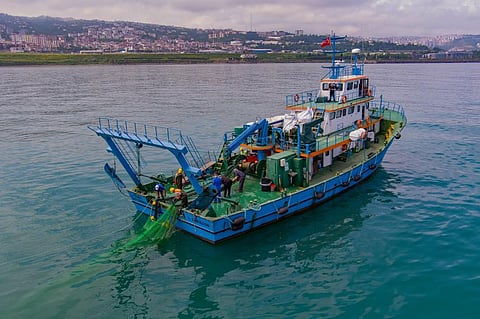

The General Fisheries Commission for the Mediterranean (GFCM) of the UN Food and Agriculture Organisation (FAO) has launched a major scientific database on Black Sea fisheries.
The platform, which was created collaboratively within the BlackSea4Fish project, will act as a research hub and will bring together scientists, students, administrators, and members of the public interested in fisheries-related topics.
The platform reflects the diversity of the region, with contributions from more than 100 researchers from six Black Sea countries.
The database holds three main datasets: a database of fisheries experts, a comprehensive publications database, and a species reference database reflecting biological indicators extracted from those publications. It will gradually expand to serve wider data and information purposes.
Because the Black Sea is located on a deep depression and 90 per cent of its volume is deprived of oxygen, fish and fisheries have concentrated on the narrow continental shelf. The Black Sea also displays significant regional climatic differences, so most fishes are forced to undergo long range, transboundary feeding, spawning, and overwintering migrations.
The GFCM said that with natural resources confined to geographically discrete regions but spread across different political territories, it is crucial to have integrated and internationally coordinated resources management strategies. The commission has led these efforts over the past few years, and the Black Sea database is a result of this work.
The platform will provide opportunities for networking and collaboration between scientists, universities, and research centres in Black Sea countries as well as access to publications relevant to the field. BlackSea4Fish project staff will check and moderate all contributions and then publish them online through an interactive dashboard.
The GFCM will work with riparian countries including members and other stakeholders in the region to progressively expand the platform towards incorporating additional information on fleet capacity, landings, survey data, and stock assessment results in the future.
